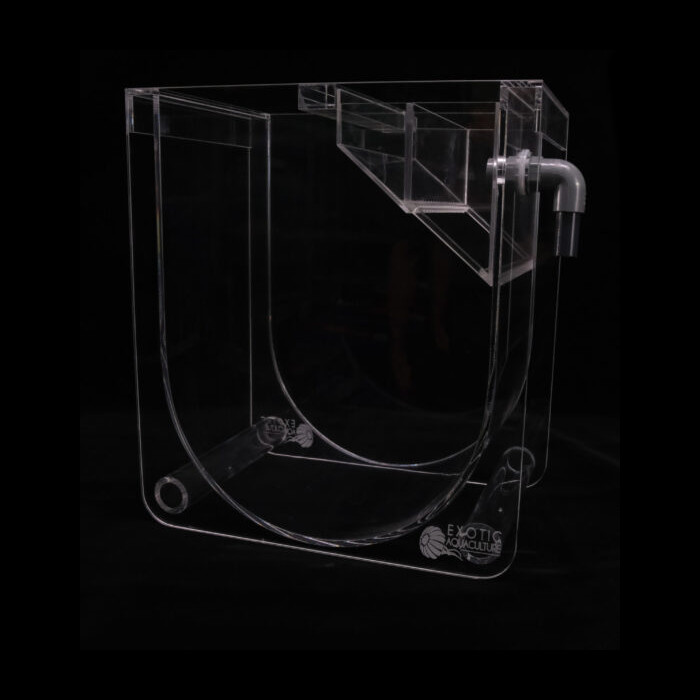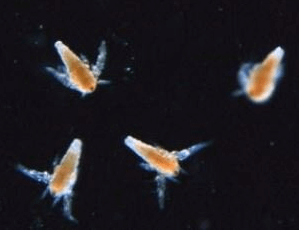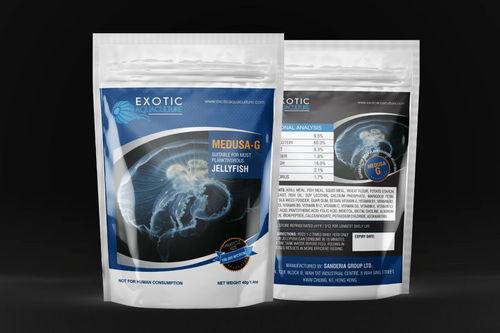Moon Jellyfish care sheet
What are moon jellyfish?
Moon jellyfish (Aurelia aurita) are a common species of jellyfish found in oceans in nothern Europe, Canada and East Asia. They are translucent with four horshoe shaped stomachs at the top of the bell. They are one of the most commonly kept jellyish in the hobby, and for good reason; they are easy to care for and can thrive in many different water conditions. This article explains how to keep Moon jellyfish successfully.
Tank setup
Moon jellyfish only get to about 30cm in diameter and aren’t very strong swimmers, so they don’t need as big a tank as you might think. For the best success we suggest a minimum of 5 U.S Gallons (25L) or more for a group of 8 2-inch jellies (or 10gals for 4inch jellies etc). As Moon jellyfish aren’t very strong swimmers, a Kreisel tank with managed flow is required to help them thrive. As most strains of Moon jellies originate from temperate regions, we suggest keeping them at 18-24°c (Note: optimum temperature may vary between different strains of moon jellies, confirm their origin from the buyer). Decoration or hides are not necessary and can even be damaging to the jellies. Moon jellies do not photosynthesize, so they do not require a light to thrive however getting a nice led light to view your jellies is always a plus!

A Kriesel tank suitable for housing moon jellies
What should I feed my moon jellies?
Most species of jellyfish (with the exception of fully grown nettles, genus Chrysaora) need to eat Artemia larvae, better known as brine shrimp. As jellies are filter feeders and are not particularly strong swimmers, they rely on their tentacles to catch and kill food. Live Baby Brine shrimp fit the bill for this perfectly, if you don’t know how to hatch Baby Brine Shrimp you can check out this video for an indepth guide (or this one for those who are more diy oriented). Although it is rather time consuming to hatch baby brine shrimp in comparison to feeding dry food, adult jellies do not need to eat very often and you can get away with feeding once a day to stay healthy. If this is too time consuming, you can do start one big hatch and freeze your baby brine shrimp in cubes to feed later.

FRESHLY HATCHED Baby brine shrimp (Artemia nauplii)

We also offer a Moon jelly specific powder food called Medusa-G, this will help keep your moon jellies healthy and thriving without the hassle of having to hatch brine shrimp every day. Simply mix half a tea spoon per jellyfish of the powder with salt water, then add to the aquarium.
Although Medusa-G is a great alternative to hatching brine shrimp every day, it may collect at the bottom of the tank and affect water quality. Because of this we suggest to use the bowl feeding method, this involves moving the jellies out of the tank into a bowl with some tank water and adding the Medusa-G (or any powder food) to the bowl. After an hour or so the jellies should have eaten the powder, you can then return them to the tank and dump the bowl water with the food into the drain or bin.
Moon jellyfish tank mates
Can you keep others species with moon jellyfish? The short answer is no. You cannot keep other species of jellies, fish or even live coral with your moon jellies. They should be kept in a species-only tank. This is because moon jellyfish are prey animals that have no brain, this means that fish and other jellyfish will attack and most likely kill the moon jelly, live coral is also a danger as the moon jellies could get caught and rip their bell on the rock their attached to or the corals themselves.
Stats at a glance
Tank size 1.5L for every inch of jellyfish Nitrite, Ammonia <0.1 ppm Nitrate <20.0 ppm Salinity 25-35 ppt Phosphate <2.0 ppm pH 7.5-8.5 Temperature 18 – 24 °C (64 – 75°F) Photosynthesis No
